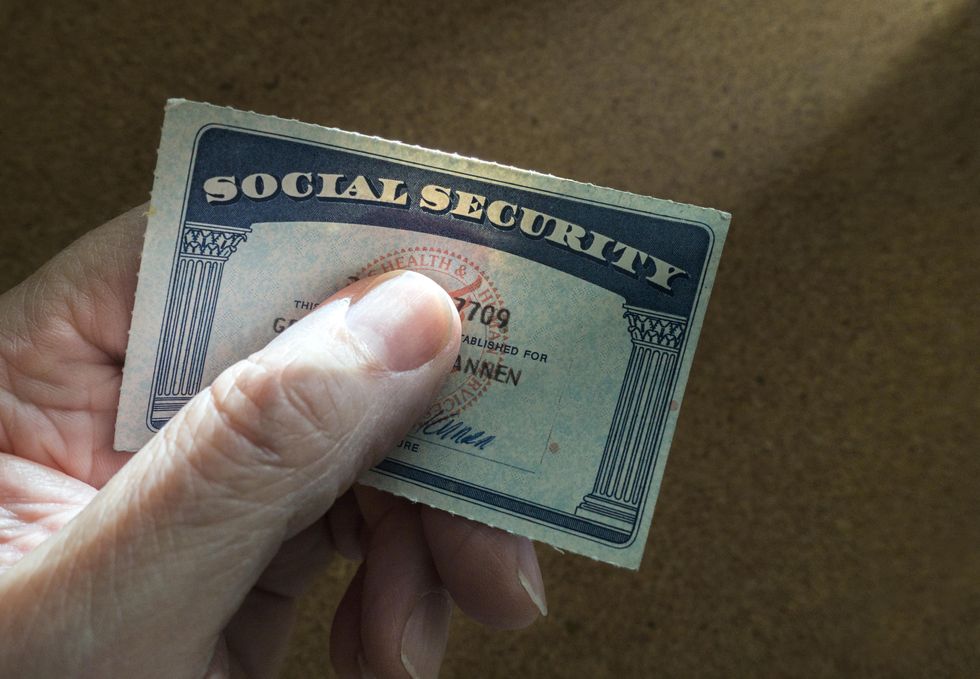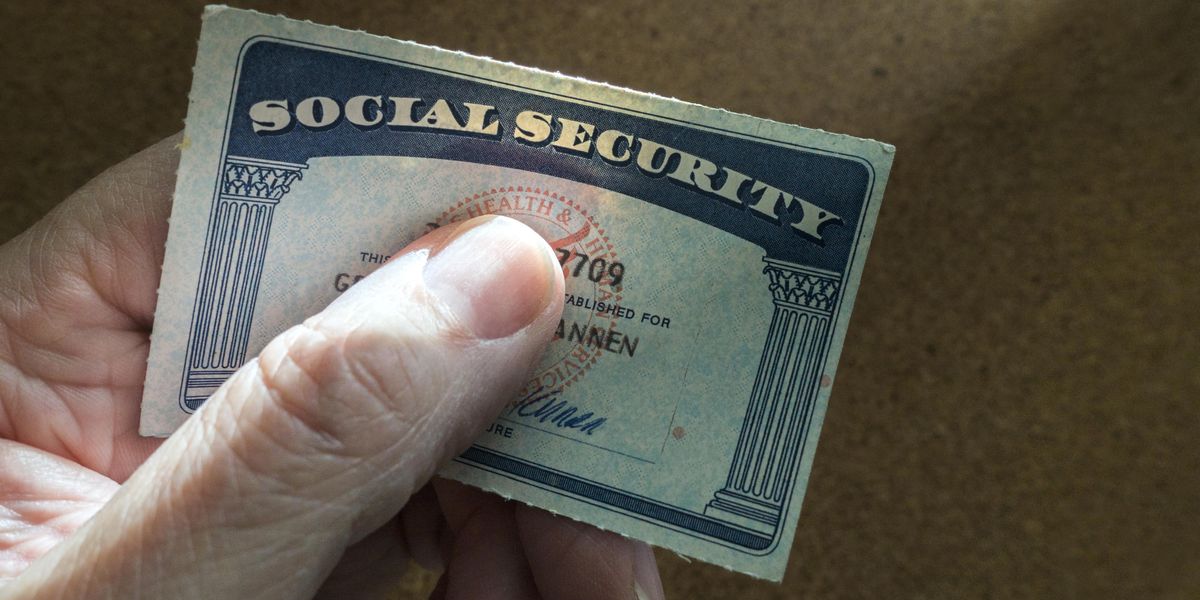
President Biden’s State of the Union speech earlier this week included the president’s observation that Republicans want to cut Social Security and Medicare, something that’s been demonstrably true since 1935. That triggered a heated exchange between the president and his Republican hecklers, who insisted it wasn’t true. “So, folks,” said Biden, “as we all apparently agree: Social Security and Medicare is off the books now, right? All right, we’ve got unanimity!”
Unfortunately, we can’t count on that. There’s plenty of evidence Republicans want to gut those programs (while acknowledging it would be “political suicide” to openly admit it). And the so-called “third way” conservative Dems spent many years calling for “entitlement” cuts after Bill Clinton’s presidency.
The party’s expressed change of heart is welcome. Unfortunately, we can’t be sure that representatives from both parties won’t collaborate on ways to slash these programs without calling them “cuts” – e.g., by raising the retirement age, sing inflation adjustments, or punting the question off to yet another “bipartisan commission.”
It would be wrong to underestimate the deep aversion this country’s elites have toward the elderly. Pundits, politicians, and “experts” have long insisted there is a “generational war” between struggling young people and supposedly wealthy oldsters. That sleight of hand draws attention away from the real “war” – the inequality-driven class war waged by the rich against everyone else.
The United States doesn’t have a “generational wealth” problem. It has a “wealthy people’s wealth” problem. The inequalities within generations are far greater than the inequality between generations. Notably, the countries that spend the most on seniors also spend the most on children—perhaps because equitable societies don’t take a “divide and conquer” approach toward their members.
The United States doesn’t have a “generational wealth” problem. It has a “wealthy people’s wealth” problem.
But this misdirection isn’t just a stratagem. Elite contempt for the elderly is real and palpable, even when the elites are elderly themselves. Case in point: former GOP senator Alan Simpson, tapped by President Obama to co-lead a “deficit commission,” who was effulgent with vitriol toward his fellow oldsters.
The latest example of this elite contempt comes from Ross Douthat, a conservative commentator for the New York Times. Douthat doesn’t just dislike the elderly. He thinks they’re our greatest global threat.
Seriously.
General Sclerosis
Douthat is the kind of conservative that liberals love. He writes well and seems thoughtful. Douthat, the son of a successful New Haven, Connecticut lawyer, attended both a private high school and Harvard. He suffered the debilitating effects of an underrecognized (and sometimes stigmatized) disease and wrote about it.
It is therefore both ironic and unfortunate that Douthat seems incapable of recognizing the pain and stigmatization of the old. “There are two kinds of people in the world,” Douthat writes. “Those who believe the defining challenge of the 21st century will be climate change, and those who know that it will be the birth dearth, the population bust … the old age of the world.”
Darkened. Stagnant. Sclerotic. Swollen. For Douthat, aging is a global horror that will clot the planet’s lifeblood in its varicose veins.
Don’t look up, Earthlings. Grandma’s headed your way.
An entire essay could be written about the ageist language in Douthat’s opening paragraphs alone. In the coming “old-age era,” he writes, China will be hobbled by “a darkened future where it grows old and stagnant.” Developed nations will be threatened by “general sclerosis, a loss of dynamism and innovation, and a zero-sum struggle between a swollen retired population and the overburdened young.”
Darkened. Stagnant. Sclerotic. Swollen. For Douthat, aging is a global horror that will clot the planet’s lifeblood in its varicose veins.
Cleaning Up After the Privileged
Here’s Douthat’s first rule: “The rich world will need redistribution back from old to young.”
This is the thumbnail version of the generation war meme. But generations don’t have wealth. People do—people, for example, who send their children to private high schools and Harvard. People don’t live in generations; they live in families. If someone suffers, it is their family and not their generation who suffers with them.
Douthat has shown a capacity for that kind of understanding. He wrote of his Harvard experience:
“For all that I abhorred most of (the left’s) ideas …[t]hey at least shared my sense that there was something wrong with Harvard, and with the entire culture of meritocracy and achievement and cheerful capitalism—something that had to do with greed and ambition and corruption, with the lavish spreads that awaited us at McKinsey and Bain recruiting sessions and the hollow-eyed weariness of the immigrant women who cleaned up the mess afterward, long after we had sought out the bars and then our beds.”
Some of those “hollow-eyed” workers have surely retired by now—if “retired” is the right word for a person whose body fails after a lifetime of manual labor. The empathetic Douthat would now eviscerate whatever small sources of income those “immigrant women” possess.
Generations don’t have wealth. People do—people, for example, who send their children to private high schools and Harvard.
After a dutiful slap at the elite “technocrats” he once condemned, Douthat continues:
“But in an aging world, the technocratic desire to reform old-age entitlements will become ever more essential and correct—so long as the savings can be used to make it easier for young people to start a family, open a business, own a home.”
There are no “technocrats.” There are only ideologues who have learned to shroud their biases in a cloak of manipulated numbers. Like they say: Garbage in, garbage out.
Young people do need economic help, desperately. Their finances have been decimated by student debt, bank criminality, and skyrocketing inequality. Somebody has to pay for that help, and if it’s not going to be the comfortable residents of New Haven … well, then, those immigrant women will have to clean up after Ross and his friends one last time.
How Wealthy Are the Old?
What Douthat calls “old-age entitlements,” Social Security and Medicare, also serve millions of children, spouses, and working-age disabled people. And older people on Social Security have typically spent decades working and paying taxes into the system.
Are older Americans really “wealthy”? In the third quarter of 2022, Americans 70 years of age and older held a total of $34.2 trillion in wealth. The average net worth of households over 65, by one measure, is in the $1 million range. But that’s the average. Presuming they teach the difference between the mean and the median at Harvard, our columnist should understand that the median or average net worth for households over 65 is roughly $250,000. That means half these households have less—sometimes much less.
Here, too, class matters. Matt Bruenig of the People’s Policy Project notes that the top ten percent of people over 65 held more than 70 percent of that age group’s wealth in 2019, roughly mirroring our economy’s overall inequality.
Households with $250,000 in assets may seem wealthy to members of younger generations. But 40 percent of all older households have no income except Social Security, one of the most meager pension systems in the developed world. Even after this year’s widely-publicized inflation adjustment, Social Security’s average monthly benefit will be only $1,827, with women receiving significantly less on average than men. And the National Council on Aging reports that more than half of seniors also have debt.
A 2019 government study found that the median income of older people in the United States was $27,398 ($36,921 for men and $21,815 for women). Jeff Bezos makes that much in the first few seconds of each new year. It also found that 4.9 million people 65 and older lived below the poverty level, while another 2.6 million were “near-poor. That’s one older person in three.
And the pandemic has hit older workers especially hard, as economist Elise Gould notes, which means many will enter retirement with even less resources than expected. The Economic Policy Institute documents the racial and educational factors that make the retirement crisis even worse for some.
Resources and Needs
Real estate comprises a large part of older people’s assets, and it can be a challenge to use that wealth. Older people must depend on assets (if they have any) for many things, including the cost of health care (hearing, dental, and vision, as well as out-of-pocket medical costs) and the possible need for nursing home care in the near future. And if people sell their homes, they’ll still need to pay rent.
What happens if an older person becomes infirm and needs nursing care? Another 2019 study found that 70 percent of people who reach age 65 will need long term support and services at some point, while a 2021 study found that “about one-third of retirees do not have the resources to afford even minimal care and only about one-fifth could cover severe needs.”
Less wealthy seniors tend to have poorer health, so the cost burden falls disproportionately on those least able to afford it. And it’s getting worse.
Health care costs can eat up $250,000 in the blink of an eye. Nursing home care is so expensive that many people are forced to spend themselves into poverty to qualify for Medicaid. And the nursing home industry (why should it be an “industry”?) is in chaos following the Covid pandemic.
Less wealthy seniors tend to have poorer health, so the cost burden falls disproportionately on those least able to afford it. And it’s getting worse. As Kaiser Health News reports, “Cuts in government payments for patient care and less construction of new nursing homes are already taking a toll.”
A Vision Problem
While Ross Douthat scolds seniors, the 400 people on Forbes’ list of wealthiest Americans hold combined wealth of more than $4 trillion. That comes to $122,580 for every senior household in the country – all 34.1 million of them.
There’s one thing America’s billionaires and cash-strapped seniors have in common: public policy choices put them both where they are today. But most seniors need the money, even after a lifetime of work, while billionaires don’t. And yet, we still see headlines like this one from the New York Times: “Baby Boomers: Rich With Real Estate and Not Letting Go.”
Ageism like Douthat’s doesn’t just lead to bad policy prescriptions. The bigotry also harms the health of older people in invisible yet measurable ways. That can lead to earlier deaths for seniors, a concern that spurred research by the World Health Organization. Nor is ageism restricted to the right. It was a regular feature of programs like Rachel Maddow’s, too, back when our elderly president was a Republican.
“We are aging, comfortable and stuck,” Douthat wrote of Western societies in 2020. But who, exactly, is “we”? We’re all aging, of course, from the moment of our birth until the hour of our death. But the comfort which Douthat takes for granted is far from universal. Millions of people of all ages are decidedly uncomfortable. Many can’t afford to be “stuck,” even in their senior years, because they must keep working into their seventies and eighties to survive.
Speak for yourself, pal. This country is hobbled by cocoons of privilege, not senescence.
The women who cleaned up after Harvard’s students were probably not “hollow-eyed” at all. My guess is that a youthful Douthat drew that phrase from literature rather than observation. In any case, the vision problem isn’t theirs. It belongs to an elite-driven political culture that cannot envision a world whose resources are democratically guided and used for the benefit of all.
“We,” Douthat frets, are “burrowing into cocoons from which no chrysalis is likely to emerge, growing old unhappily together in the glowing light of tiny screens.”
Speak for yourself, pal. This country is hobbled by cocoons of privilege, not senescence. The soft light inside these tiny shells casts the rest of the world into shadow, rendering invisible both the pain of living and the promise of collaborative change. The promise, like the pain, is real. It’s the reward for being part of a community, one among many.
They’re sad, really, these people in their dark and narcotizing cocoons. Out here in the sunlight there are butterflies as far as the eye can see, visible to young and old alike. All it takes is the spirit and the will to see them.
Related Articles Around the Web




